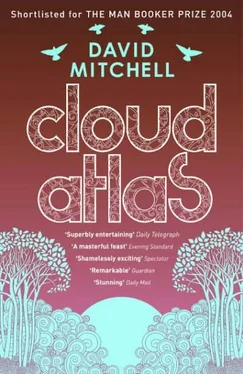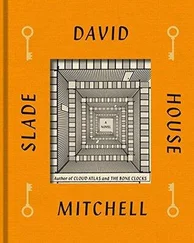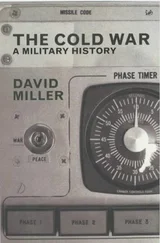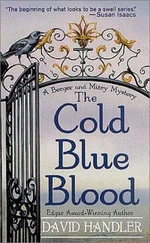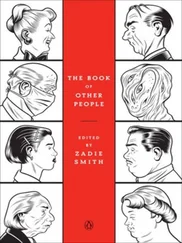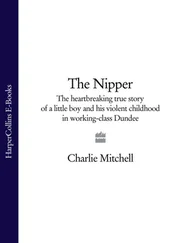Rest, write , my superiors told me, almost sixty years in the bush, what stories you must have! And this is how I would tell them, not with pen or pencil but a brush, dipped in water, dipped in paint, sweeping back and forth across an empty page.
Look how the gray gathers here, how here it stumbles into white.
Look closer, how each square inch, each speck of color is made up of smaller specks of moisture. Of water from the brush, of Ronnie’s rain falling to those grieving parents’ faces, of snow, of molecules, of the hydrogen escaped years ago from those balloons.
Of breaths escaped from mouths.
And the last thing I would draw or paint or write is what I see emerging now: eyes, ears, tail, snout, a thick mane. I throttle back and stop. Red tongue, white teeth.
Ronnie’s wolf.
It must be: any other wolf would have run at the sound and light- or maybe this one has sized me up and seen me for what I am. An aging priest. A soldier who couldn’t shoot. The one the others left behind.
The wolf paces left, then right, fast at first, then slow. I don’t know what holds him at bay: fear of a gun? I do not have one. I raise my empty hands, and he stops and stares, his muscles tense, and so do mine.
I believe in God the Father Almighty and I believe in the wolves He made, their claws, their bite. But He did not make this one, so I have nothing to fear. This is Ronnie’s wolf. A tuunraq. A spirit, a familiar, a work of the mind. Isn’t he? I cannot come to harm from something imaginary.
But something in me is frightened, enough to hammer my heart and make me sweat in the subzero cold. Frightened and almost teary with joy, because the longer the wolf paces and pants, the more I find this proof that he is not, in fact, a tuunraq , he is the work of no one’s imagination but God’s, or that there is no such thing as imagination out here, that everything is real, that he is real, teeth and all, and this is why Ronnie sent me to meet him. To die, and in doing so join Lily, and the rest.
Park rangers say: appear larger than you are, make a noise, speak; remind the animal that you are human, not standard prey.
So I stay silent, I move away from the snowmachine, I crouch down, I put one knee in the snow. I shift my weight, the snow gives, I sink a little. I put down the other knee and sink a little more. I recover my balance, extend a hand, and then the other.
And the wolf steps closer, unsure.
I look at his eyes, and then remember: his mouth! Who or what is he carrying by the scruff of its neck? Lily’s baby? Saburo? The boy from the balloon? Ronnie? I can’t see. I look at the eyes again.
The wolf steps closer, close enough that our breath now clouds together, and I am on both knees, trembling, remembering: This is what you must give him —
Breath, cloud. Breath, cloud.
I breathe out the breath Ronnie gave me as he died, the breath Ronnie took from Lily’s baby after he died.
Bring this to her son, I tell the wolf.
Breath, cloud.
And to Ronnie, breathe his life back. And the boy who flew across the ocean: fill his lungs once more, his balloon as well.
Breathe life into Lily.
Into me.
Deep in the snow, I feel a flash of how that first Yup’ik man of stone felt. A staggering jumble of blocks sinking, too slowly, into the tundra. I am cold and wet, and old.
The wolf steps closer and then around me. I can feel him at the small of my back, now my shoulder, now he’s before me once more. I breathe deep; I’m ready. But then, without a look, without a sound, he leaps away, lands in a trot, then leaps again, and lands galloping, fleeing or leading me to some new and distant place.
I rise.
Those interested in the historical and cultural issues raised here should consult the following sources, to which I am indebted: Robert Mikesh’s definitive Japan’s World War II Balloon Bomb Attacks on North America; James H. Barker’s beautiful and informative Always Getting Ready: Upterrlainarluta: Yup’ik Eskimo Subsistence in Southwest Alaska; Ann Fienup-Riordan’s Boundaries and Passages: Rule and Ritual in Yup’ik Eskimo Tradition , where I first found a version of the myth of the sobbing boy buried beside his mother; Bethel: The First One Hundred Years by Mary Lenz and James H. Barker; Segundo Llorente’s Memoirs of a Yukon Priest; and A. B. Hartley’s Unexploded Bomb.
I am very grateful to the following individuals and institutions for helping me ground this work of fiction in fact: former Comdr. Hansel T. Wood, Jr., USN; CW04 John D. Bartleson, Jr., USN (Ret.), historian of the Naval Explosive Ordnance Disposal Association, Inc.; Maj. Sean Bourke, M.D., USAF; Robert C. Mikesh, former senior curator, National Air and Space Museum; Alan Renga, assistant archivist of the San Diego Aerospace Museum; Dr. William Atwater, Ph.D., director of the U.S. Army Ordnance Museum; Dr. Amy R. Cohen, Ph.D., Randolph-Macon Woman’s College; Lt. Amy Hansen and the public affairs staff of Elmendorf Air Force Base; the National Air and Space Museum Archives and Library; the National Archives facilities in Washington, D.C., and College Park, Maryland, especially the archivists of the Motion Picture, Audio and Video collection; the Rare Book and Special Collections Room of the Library of Congress; the John Wesley Powell Anthropology Library of the Smithsonian National Museum of Natural History; the Alaska Room librarians at Anchorage’s Z. J. Loussac Public Library; Aaron Micallef, director of education and public programs, and the archive staff at the Anchorage Museum of Art and History; the General Research Division of the New York Public Library; the Seattle Public Library; George Mason University’s Fen-wick Library and Georgetown University’s Lauinger Library; and the Martha Washington Library of the Fairfax County (Virginia) Public Library System.
A wide variety of patient and knowledgeable Alaskans helped me avoid making cheechako errors (such as misusing the word cheechako) ; I’m particularly thankful to Mike Martz and John Active of KYUK/Bethel Broadcasting; Joan Hamilton and Michael Stevens of the Yupiit Piciryarait Museum; Grant Fairbanks; Sarge Connick; Elias and Bernie Venes; Gladys Jung; Crusty Old Joe Stevens; Olivia Terry of Island Aviation; VPSO Mark Haglin; the folks at KNBA; and the extraordinary Susan Oliver (and her extraordinary family) of Kodiak.
A final thanks to those who read, again and again, and offered their advice and encouragement, especially my editor, John Flicker; my agent, Wendy Sherman; my provocateur, Susan Richards Shreve; and my parents, Joan and Charles Callanan; as well as Tony Eprile, Cathy Gray, Dan Kois, Mike Pabich, Nani Power, Paula R. Sidore, and Mary Lucy Wood; along with all the staff and students of the George Mason University Creative Writing Program.
Thank you most of all to my wife, Susan, whose love, quiet courage, great patience, and ability to defuse just about anything inspired much of this book.
